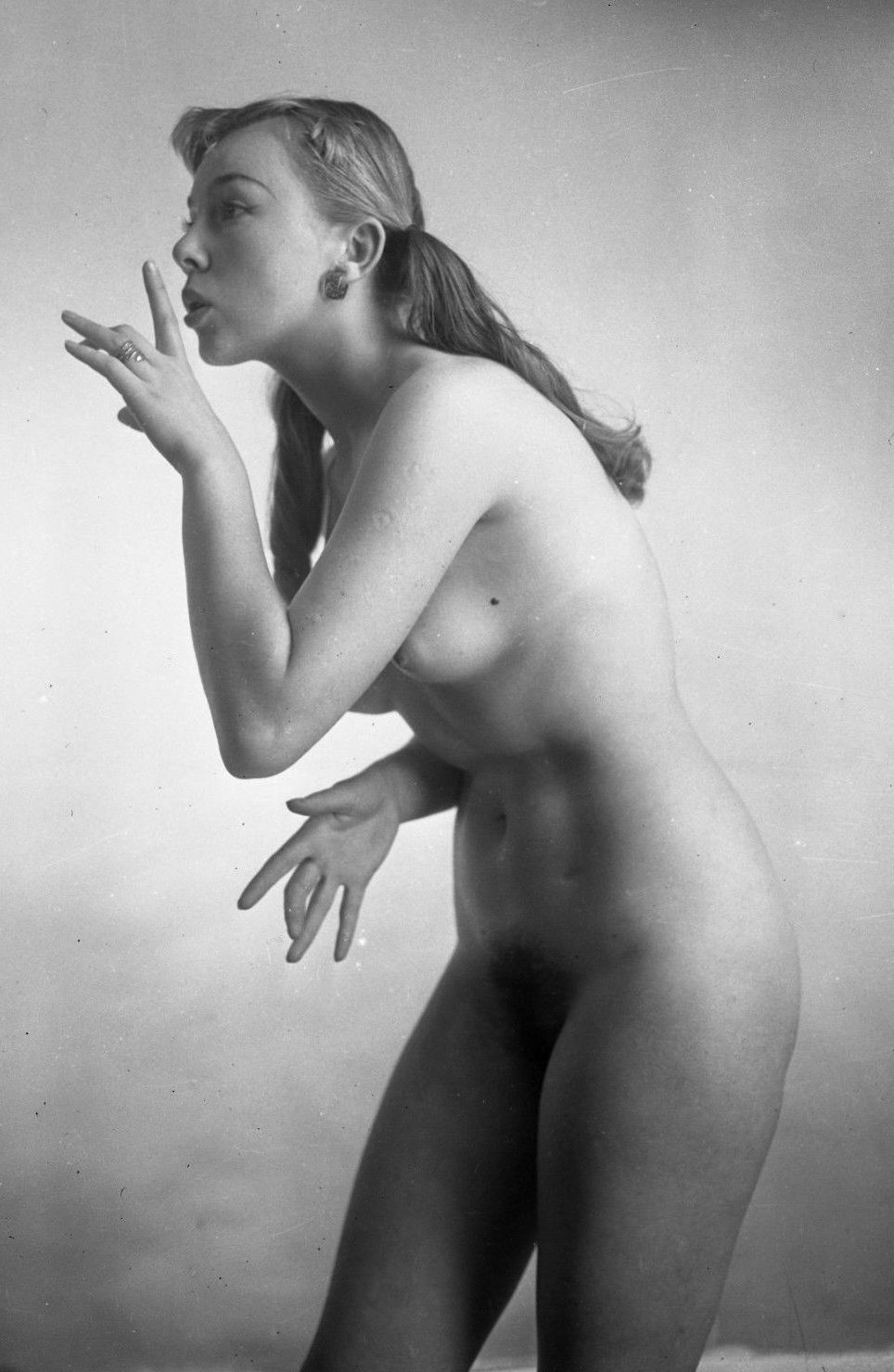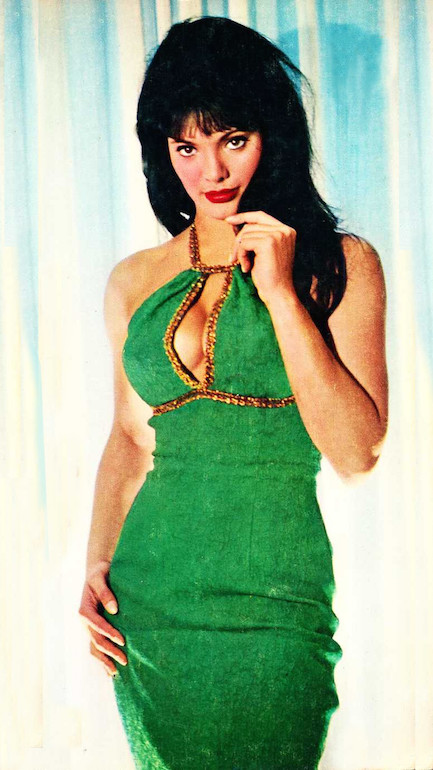 100 pounds of trigger pull weight. 
Above is reedy Iso Yban, here pictured with a toy machine gun and not much else. Her various bios say she was born in Essen, Germany, but moved to Paris, where she became a dancer at Le Crazy Horse, and as a model posed under the aforementioned name, as well as Yso Iban, Isi Yban, Marlène Funch, Christina Madison, Belinda, et al. This bold shot was made by French lensman Serge Jacques and it dates from the late 1960s.
 Can you keep a secret? I'm way ahead of my time. 
Above is a fantastically beautiful Serge Jacques photo of Belgian actress and model Dominique Wilms that dates from the early 1950s. Wilms appeared in films such as Poison Ivy, Banco à Bangkok pour OSS 117, and Les femmes s'en balancent, aka Dames Don't Care. Looks like Dom don't care either, as this is a very provocative nude for a working actress of the 1950s. Just a glimpse of pubic hair was enough to get photographers and vendors sent to prison, even in France, where Jacques was based. The shot surfaced years after it was made, we suspect, and we should rejoice that it saw the light of day, because daring Dominique is all that and a box of hot tamales.
 The science is indisputable. She's causing a sharp rise in temperatures. 
French actress Sylvia Sorrente has a pretty good femme fatale gaze. It's penetrating, and a bit secretive, and might make you feel warm in a funny place. Sorrente had a minor cinematic career but appeared in Taras Bulba il cosacco, aka Taras Bulba, Danza macabra, aka Castle of Blood, and Bikini Paradise. Based on the title alone we'll try to find Castle of Blood. Hah! You didn't buy that for a second, did you? Who wants to deal with a Castle of Blood when there's a Bikini Paradise? We'll report back after we cool down.
|
 |

The headlines that mattered yesteryear.
2003—Hope Dies
Film legend Bob Hope dies of pneumonia two months after celebrating his 100th birthday. 1945—Churchill Given the Sack
In spite of admiring Winston Churchill as a great wartime leader, Britons elect
Clement Attlee the nation's new prime minister in a sweeping victory for the Labour Party over the Conservatives. 1952—Evita Peron Dies
Eva Duarte de Peron, aka Evita, wife of the president of the Argentine Republic, dies from cancer at age 33. Evita had brought the working classes into a position of political power never witnessed before, but was hated by the nation's powerful military class. She is lain to rest in Milan, Italy in a secret grave under a nun's name, but is eventually returned to Argentina for reburial beside her husband in 1974. 1943—Mussolini Calls It Quits
Italian dictator Benito Mussolini steps down as head of the armed forces and the government. It soon becomes clear that Il Duce did not relinquish power voluntarily, but was forced to resign after former Fascist colleagues turned against him. He is later installed by Germany as leader of the Italian Social Republic in the north of the country, but is killed by partisans in 1945.
|

|
|

It's easy. We have an uploader that makes it a snap. Use it to submit your art, text, header, and subhead. Your post can be funny, serious, or anything in between, as long as it's vintage pulp. You'll get a byline and experience the fleeting pride of free authorship. We'll edit your post for typos, but the rest is up to you. Click here to give us your best shot.

|
|










































































